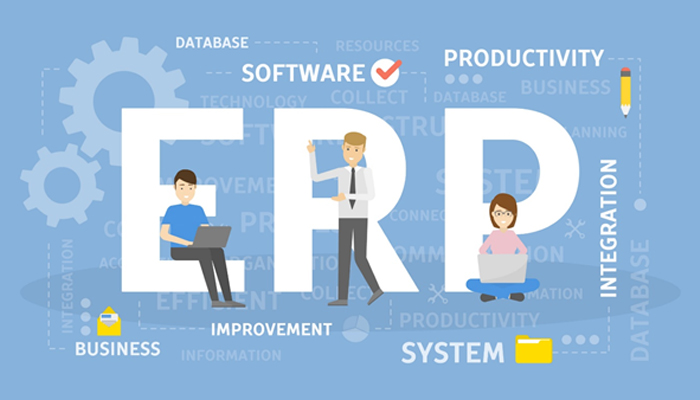The global ERP Software market size is projected to reach USD 40890 Million by 2028, from USD 30330 Million in 2021, at a CAGR of 4.3% during 2022-2028.
Major factors driving the growth of the ERP software market:
The growing need to improve an organization’s efficiency by streamlining various processes across departments is expected to propel the ERP software market forward. By assisting users in navigating complex processes, preventing data re-entry, and improving functions such as production, order completion, and delivery, ERP improves efficiency and productivity. Throughout, processes have been streamlined and made more efficient.
ERP software market growth is expected to be fueled by benefits such as visibility, cost-effectiveness, continuous software updates, and better data and cloud security.
Trends Influencing the Growth of ERP Software Market
The need to improve manufacturing effectiveness and efficiency is expected to drive ERP adoption, which will in turn drive ERP software market growth. Manufacturing ERP is a centralized system for managing all aspects of a manufacturing facility’s operations and processes, from production to payroll. ERP provides unprecedented visibility, coordination, and management across a company’s disparate processes, resulting in increased operational efficiency.
The challenge for healthcare organizations is to reduce operational costs without sacrificing patient care. An ERP system aids health care providers in overcoming these obstacles by increasing efficiency and accuracy across the board. Providers can save money on labor while providing excellent care by improving workflow and reducing the need for manual tasks. An ERP system also gives you more visibility and access to real-time data, allowing you to make quick and informed decisions. For example, with ERP, businesses can easily track medical supply levels and ensure that patients always have what they require, resulting in higher patient satisfaction. Thus, the increasing adoption in healthcare is expected to drive the growth of the ERP software market.
In the banking industry, there is no room for error, so banking facilities require cutting-edge systems to ensure smooth operations, which can be accomplished by integrating ERP software. ERP is a single platform that allows you to monitor and manage core banking operations 24 hours a day, seven days a week. Banking processes can be seamlessly integrated, and data can be streamlined across all branches and departments. Data entry and report generation are examples of repetitive tasks that can be automated. As a result, vital resources are freed up to be allocated to more important areas. ERPs can now also monitor all access points, thereby improving overall security. Banks will have real-time alert systems via ERP, and administrators will be notified if suspicious activity is detected. These factors are expected to increase the growth of the ERP software market.
Disparate systems with multiple User Interfaces (UI) are difficult to manage in a challenging business environment. Having to sort through data on three different systems can certainly make an executive’s day ineffective. Executives will have access to real-time data that connects across various departments and channels in a single system with a cloud-based ERP system, eliminating the need to go through multiple point solutions. As a result, telecom companies can concentrate more on their customers rather than their business processes. Thus the increasing demand for ERP in telecom is expected to drive the growth of the ERP software market.
ERP Software Market Share
Based on type, Cloud-based ERP is expected to be the most lucrative. Cloud-based applications can help businesses save money on their IT infrastructure. This is the primary driver of enterprise adoption of cloud-based applications.
Based on application, the manufacturing industry is expected to be the most lucrative. Manufacturing ERP solutions aim to optimize all aspects of the manufacturing process, from sourcing and acquisition to development, storage, quality testing, and distribution, by utilizing advanced features and functionality. As a result, ERP for manufacturing can improve efficiency, lower costs, and boost sales and profits.
During the forecast period, North America and China are main markets, they occupy about 35% of the global market. Manufacturing, BFSI, and transportation and logistics are among the industry verticals that have seen rapid growth in this region. To meet the growing demand for environmental stewardship. To improve productivity and reduce business complexity, many small and medium-sized businesses in the region are implementing cloud-based solutions.
Further, the Global ERP Software Market is Segmented by Type (On Premise ERP, Cloud Based ERP), by Application (Manufacturing, BFSI, Healthcare, Aerospace & Defense, Telecom): Opportunity Analysis and Industry Forecast, 2022–2028.




